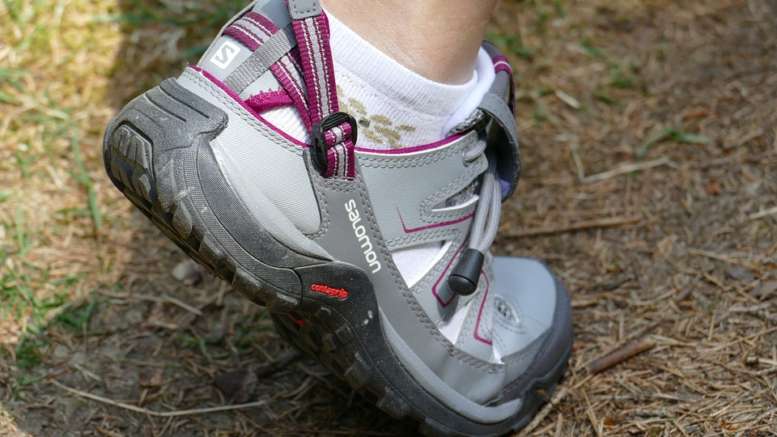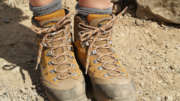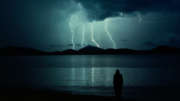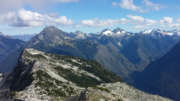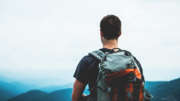Outside of getting lost, there aren’t too many mundane things that can impact your hike as negatively as getting a blister. Depending on how many foot blisters you have, and their sizes, it may mean the end of your trek. In a previous article we talked about how to prevent foot blisters. However, there will be times when even those measures fail and your feet start hurting. When that happens, it’s important to know exactly how to treat your blister so that you reduce the risk of a dangerous infection and prevent further damage.
To recap briefly on how friction blisters develop, it begins as a result of having wet or damp feet. When your skin is wet your coefficient of friction drops, making your foot stick more to your boot and sock. The resulting friction tears the outer layer of your skin from the underlying tissue and your cells release plasma to facilitate healing. This plasma accumulates as a clear fluid that bubbles under your skin. If the bubble is on a weight-bearing section of your foot, it may rupture under the pressure of your body weight. If the blister is unbroken, the decision to drain it is up to you.
Draining a Foot Blister
If you decide to pierce your blister to drain the fluid, make sure you are in a controlled environment. Sterilize a needle or similarly sharp object with rubbing alcohol before piercing the very edge of the bubble. You want to avoid tearing the blister or otherwise creating a large hole that would allow bacteria to enter. Once you’ve made a hole, gently massage the plasma fluid toward it so that it can slowly drain. After the blister is empty, clean the area with soap and water and cover the entire area in a bandage that should be changed out regularly.
Be sure to emphasize the sterility of the process since the only thing worse than a blister is an infected one. If you notice that the pain of your blister increases after draining or that the area is red, swollen, or unusually warm, your wound may be infected. Also, if you notice pus secreting from the blister, bacteria has definitely set up shop.
Treating a Foot Blister
There are a variety of home remedies to consider when dealing with blister treatment. While you probably don’t have some of these items on your hike, they may be worth bringing on your next trek if you tend to get blisters. First, you can soak your blister in a cooled concoction of strong green tea and baking soda. The tea will help reduce inflammation and the baking soda will keep the wound clean. You can also use either castor oil, apple cider vinegar, or a combination of the two to help dry out a blister and kill harmful bacteria. Another way is to take vitamin E supplements to aid in skin reparation and to reduce scar tissue formation. Aloe vera is a remarkable substance that can sometimes be found in the wild depending on where you are. It works as both a disinfectant and as an antihistamine. Keeping some aloe gel on hand is always a good idea.
Remember to constantly change out your socks each day and to allow your boots to dry out while you camp. Keeping your feet dry is paramount to avoiding blisters. If you develop one, however, focus on keeping the wound clean so that a small wound doesn’t become a big problem.

